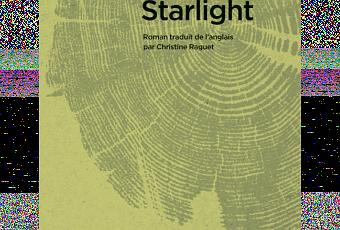

Meanwhile, through the lens of his camera he captured a world that few people got to experience.įractions of time frozen in his photographs both sustain and, through their quality, threaten his splendid isolation. Frank, who never strayed far from home, had learned to fill his life with strays who provided substitute relationships with which he forged his idea of family. Frank and Eugene, outdoor enthusiasts, introduce them to nature, trail rides, and fishing, which are therapy for their troubled souls. He and Anderson have a score to settle with her as soon as they get out of the hospital.īook Two, “Deer Stalker,” brings Emmy and Winnie to a better place than they fled. With good reason does she fret - her ex-partner Cadotte is looking for her with a mission of sating his vengeance. Emmy is on the run and trying to give Winnie a chance at life, and though she finds a haven with Frank, she cannot find peace from her fears of her stalker. He introduces them, and the reader, to Eugene Roth, his ersatz father figure. A farm in the Nechako Valley, circa 1950 (postcard)įrank hires Emmy as his live-in housekeeper and takes in Winnie in the process.

It is launching him towards a big-city fame that keeps intruding on the rural solitude that inspires his work.

He is at a turning point in his career as a photographer. The screaming emerges from the metaphorical flames of this disastrous uncoupling.įours years and counting, and Frank Starlight is still on the farm in the Nechako Valley when a thoroughly battered Emmy stumbles into his life. (For the most part Wagamese uses the surnames of his characters and almost renders their first names incidental.) Emmy and Winnie escape Cadotte’s grip after she kicks and fights them with knives and various blunt objects. Although the option arises for him to leave his valley home, he decides to remain and continue his relationship with the farm and the land around the Fraser Lake district of British Columbia.īook One, “Wild Things,” opens with Emmy Strong and her daughter, Winnie, planning on leaving Emmy’s abuser Jeff Cadotte, who is boozing with his friend Anderson. His life has only questions and a vague purpose. He is dealing with the recent death of his father figure and feeling the kind of emptiness that comes with loss.
/https://www.thestar.com/content/dam/thestar/entertainment/books/reviews/2018/08/10/richard-wagamese-final-novel-a-captivating-and-ultimately-uplifting-read/richard_wagamese.jpg)
He is a young man in 1976 when we meet him. The publisher then provides a note explaining the decision to release Starlight as a tribute to the author’s influence on contemporary native literature, and includes an essay penned by Wagamese that is biographical in tone and hints at a hard life.įrank Starlight is the title character whose perspective makes up the prologue. Wagamese divides his straightforward narrative into a prologue and three sections, though the last is truncated by his death. Toronto: Penguin Random House (McClelland & Stewart), 2018


 0 kommentar(er)
0 kommentar(er)
